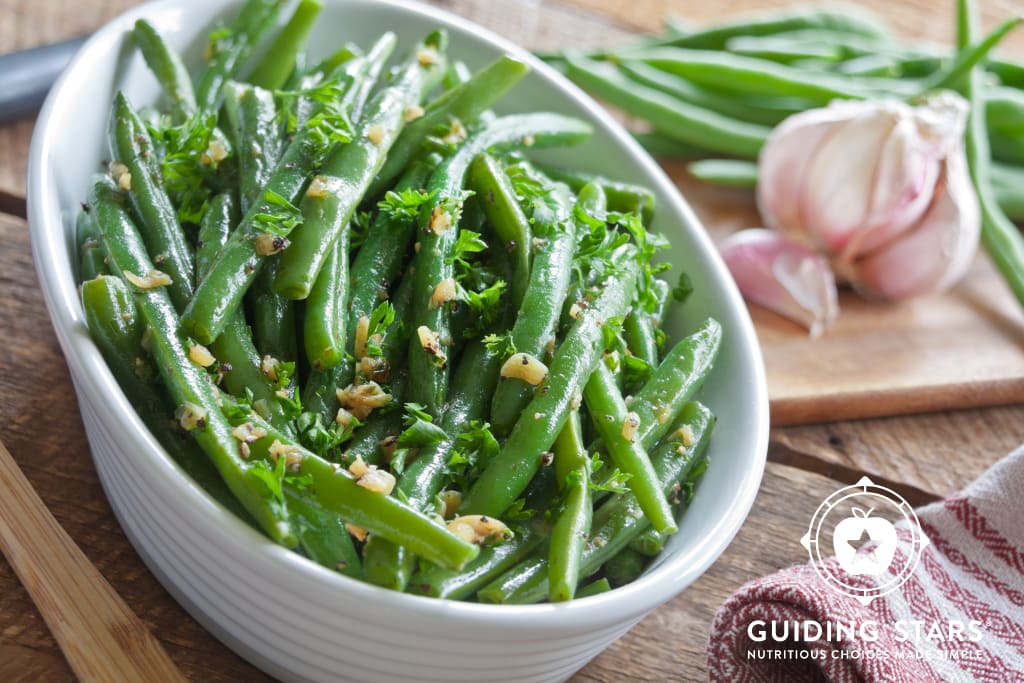
Rubbery, squeaky, or mushy. Those are the dreaded descriptors that but many people off green beans. At their best, however, green beans can be crunchy, snappy, and crispy. They add green to your plate, and green is a color many of us could stand to eat a little more of. Let’s talk about two techniques to improve your green bean game.
Blanching
You may run across the instruction “blanche the…” in cooking vegetables and not be sure what it means. It does not mean “boil.” Or, rather, it means “boil in a very specific way.” The idea is to wet-sear the vegetables, cooking them very briefly at a high heat…and then to cool them rapidly to stop them from overcooking.
The trick is to use the largest pot of water you realistically can. Fill it with cold water and bring to a rapid boil over high heat. (You should not be able to stir away the bubbles.) The mass of the water will help keep the pot hot when you drop in your room temperature vegetables. Cook them for 3-4 minutes. Have a bath of ice water standing by and scoop them into the ice bath with a slotted spoon or strainer.
A Note on Salt
The classic method for blanching green beans calls for salting your water until it tastes like the ocean. I won’t deny that makes some tasty green beans. If you’re serving them plain and to folks with no dietary restrictions, I say go for it. If you’re serving them sauced or with other salty foods, however, this is a good place to skip the salt and focus on getting the color and texture perfect.
Pan Searing
Another great approach to green beans is to sear them on the stovetop. If you read the instruction “sear the beans,” don’t just toss them in a frying pan. Again, the trick is to get your pan hot before the beans go in. For this method, your beans should be not only washed, but also well dried. Moisture in the pan will invite mushiness. Choose a wide, heavy-bottomed pan. Work in batches if needed to avoid crowding the pan. These are all strategies for keeping the moisture low.
Heat a little cooking fat in your pan over medium-high heat. If you’re using oil, it should have a shimmer. If you’re using butter, the foam should have subsided. A combination of vegetable oil and butter is traditional for balancing flavor and stability of the fat at heat, but you can also use one or the other. Vegetable oil earns Guiding Stars where butter does not, so it’s a more nutrition-centered choice. Either way, you don’t need much.
Spread your beans out in a single layer in the hot pan. Let cook for 1-2 minutes, shake to turn, and let cooking another 1-2 minutes. Pull them out and serve immediately.